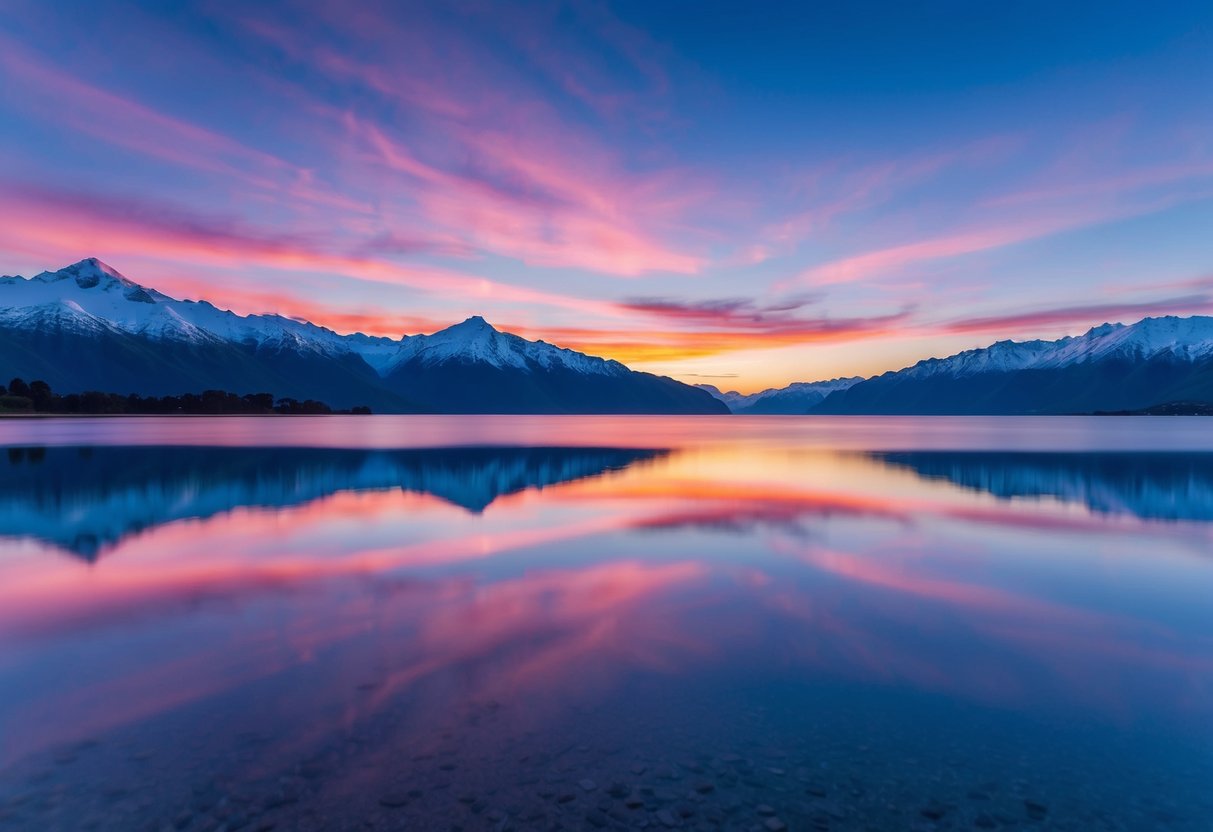
Waterfalls and Dynamic Water Photography
Capturing the movement of water in New Zealand’s lush landscapes offers photographers the chance to create artful representations of its natural beauty. Key elements include the use of ND filters to manage light and mastering long exposure techniques to achieve smooth, dreamlike effects.
Utilizing ND Filters for Waterfalls
Neutral Density (ND) filters are an essential tool when photographing waterfalls. These filters reduce the amount of light entering the lens, enabling slower shutter speeds, even in bright conditions. This slow shutter speed is what creates the silky effect in water movement that many photographers aim to achieve.
In New Zealand, locations like Huka Falls and Bridal Veil Falls present the perfect opportunity for these shots. By using an ND filter, the photographer can manage challenging lighting conditions, like midday sun, ensuring the waterfall remains the focal point of the image. Correctly selecting the right ND filter for conditions is critical, as it allows balanced exposure without overexposing the bright areas or losing details.
Best Practices for Long Exposure Water Shots
Long exposure photography transforms flowing water into smooth, misty trails. When photographing New Zealand’s waterfalls, a tripod is indispensable for stabilizing the camera during extended exposure. This ensures sharpness in static elements while allowing the water to flow smoothly across the frame.
Choosing the right time of day, ideally, during golden or blue hours, reduces harsh shadows and provides natural tones. Experimenting with different shutter speeds can convey various moods: shorter exposures retain some water texture, whereas longer ones create a more ethereal effect. Controlling aperture settings is also vital, as smaller apertures help maintain greater depth of field, emphasizing the surrounding landscape.
Astrophotography in New Zealand’s Skies
New Zealand offers a unique opportunity for astrophotography enthusiasts due to its unpolluted skies and remote locations. The country’s position in the Southern Hemisphere allows photographers to capture different constellations and celestial phenomena, especially the iconic Milky Way, which arcs vividly across the sky.
The Aoraki Mackenzie International Dark Sky Reserve is renowned for its excellent conditions for astrophotography. Here, the skies are so clear and free from light pollution that the stars appear as if they are within reach. It’s a location that draws photographers from around the world, eager to capture these celestial wonders.
In addition to the Milky Way, Southern Hemisphere stars such as the Southern Cross and the Magellanic Clouds offer spectacular subjects for photography. These stars are not visible from many other parts of the world, making New Zealand a coveted destination for night sky photographers.
Photographers often head to Lake Tekapo, where the reflection of stars in the water adds depth to their photographs. The clear nights and serene landscapes make it a perfect spot to observe and capture the grandeur of the night sky.
Patience and timing are key to capturing perfect astrophotography shots. Clear weather, the right equipment, and an understanding of light exposure make the difference between a good shot and a remarkable one. The combination of breathtaking landscapes and vibrant celestial displays makes New Zealand a paradise for capturing striking night sky images.
The Richness of New Zealand’s Maori Culture
New Zealand’s Maori culture offers a profound layer of depth to the nation’s natural beauty, intertwining history and tradition with stunning landscapes. Understanding these cultural foundations enhances the photographic experience and enriches the captured images.
Incorporating Cultural Elements into Landscapes
Photographers capturing New Zealand’s landscapes are often inspired by the profound connection between Maori culture and the natural world. Notable sites, such as Tongariro National Park, hold spiritual significance for the Maori people and provide breathtaking scenery.
Integrating Maori motifs like carved pouwhenua and intricate patterns into compositions adds depth and cultural resonance to photographs. The stories and history embedded in these landscapes offer a unique perspective on New Zealand’s natural world.
By emphasizing culturally significant landmarks, photographers can convey the spiritual importance that defines the Maori relationship with nature. Careful composition that respects these elements not only enhances the visual appeal but also honors the rich cultural heritage that imbues New Zealand’s landscapes with unique meaning.